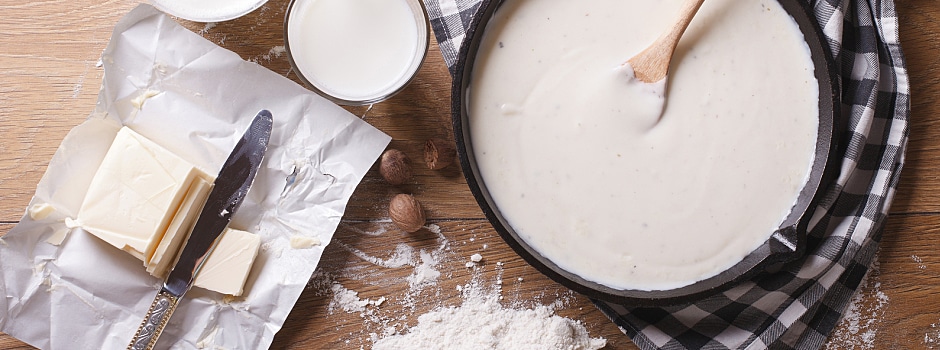When thickening soup, you probably rely on a wheat flour or cornstarch roux. But if you want your soups to have a creamy or silky texture, you may want to break that habit. If you're wondering how to thicken soup, while also coaxing the most flavor, here are a few top-notch ideas to try; some of them are even paleo-friendly, which could make a lot of your customers very happy.
Alternative Starches
If you'd like a roux but want to experiment with something other than wheat flour, give tapioca starch, rice flour, or almond flour a whirl. Mix these with an oil to make a roux and add it when your dish is almost done cooking. Some chefs prefer rice flour's malleability; it doesn't clump as much as cornstarch, for example, and it doesn't yield a noticeable color, which is handy when you're looking to thicken clear broths.
You can also give rolled oats a try. Turn the oats into a fine flour first by pulsing them in a food processor or high-power blender. You won't be able to detect an oatmeal flavor in your soups or purees, and you can use the oats like you would use any other flour. If you have leftover mashed potatoes, rice, or beans, these are other options for thickening a soup or puree. Plus, using leftovers is a smart financial move for your restaurant.
Dairy and Eggs
Instead of thickening certain sauces or soups with cream or whole milk, give Balkan or Greek yogurt a go. The result is a lighter soup with the natural tang of yogurt, which adds a depth of flavor that works remarkably well with a number of other flavors. You could also try thickening sauces or soups with either whole eggs or egg yolks, which add protein. You'll need to temper your eggs to avoid curdling, however, or you'll end up with scrambled sauce.
Dairy Alternatives
If you have a lactose-free menu or you just want to cater to those who don't consume dairy, coconut milk is an excellent substitute. Start off with a little to see how it thickens your soup or sauce. Adding more will give your dish a more pronounced coconut flavor, which works exceptionally well if you're making a dish with Thai, South East Asian, or even Latin American influences.
Tortillas and Bread
In Mexico and other parts of Latin America, leftover tortillas (and/or masa) work as the key thickening agents in certain complex sauces, like mole, and soups. Just as you would with stale bread, soak tortilla strips in a small bowl of strained soup or broth, puree them in a blender, and add the mixture to your stock pot. Both bread and tortillas absorb liquid, so keep that in mind when determining how much to use.
Nuts and Seeds
Some cuisines, such as African and Spanish foods, use ground almonds, cashews, walnuts, pumpkin seeds, and peanuts to thicken sauces, stews, and soups. You'll want to grind nuts with a mortar and pestle, or in a high-power blender, until they're close to becoming a paste. Take the nut paste, whisk it in some strained soup until combined, and then add it to your main pot. Aside from adding protein, nuts and seeds lend dishes an earthiness that's alluring and delicious.
Depending on the dish and its particular flavor profile, the options for how to thicken soup, sauce, or stock are as varied as the ingredients you can use within the dish. From tortilla pieces and potatoes to beans and nuts, the road to a velvety, thick sauce is only an ingredient or two (and some stirring) away. Happy experimenting!
Related Articles

How to Present New Menu Ideas to the Head Chef
Before presenting new menu ideas to the head chef, make sure to cover these bases and follow these tips.

Whole Grains: How to Add Them to Your Menu
Here's what some industry insiders had to say about the resurgence of whole grains and how they're incorporating them into their menu.

How to Feature Black Garlic on Your Menu
Black garlic is making its way onto menus across the United States. Here are a few ways to incorporate it into your menu.



